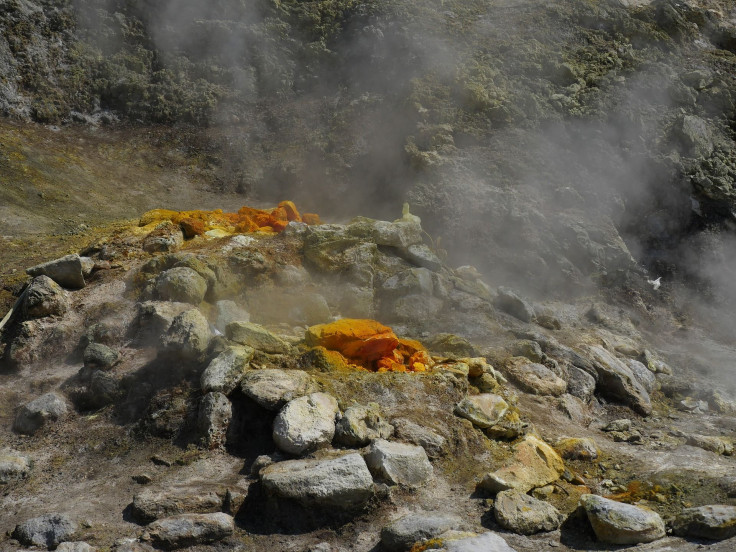Italy Supervolcano Near Mount Vesuvius May Soon Erupt, Scientists Say

A volcano in southern Italy might be getting ready to erupt, according to scientists who have found and studied the source of magma building up beneath the surface.
The team said in a study in the journal Scientific Reports that their research on the volcano Campi Flegrei could help experts better predict when volcanoes are going to explode.
The volcano just west of Naples is classified as a supervolcano because it has experienced an eruption of a magnitude 8 on the Volcano Explosivity Index — a scale that runs from 0 to 8. It is only several miles away from Mount Vesuvius, the volcano that famously erupted almost 2,000 years ago and destroyed the ancient Roman city Pompeii, covering it in ash and sending out rapid flows of hot gas and material that burned or choked the people in the city.
Campi Flegrei hasn’t erupted in hundreds of years. The last time it blew was in 1538, after earthquakes and uplifting of the ground allowed the molten rock known as magma to accumulate beneath the area.
“An eruption of similar scale would be highly destructive for the dense metropolitan city of Naples,” which is nearby and where there are more than 3 million people, the study says.
Scientists have noticed a little activity at the site here and there for the last several decades that is a sign of magma moving beneath the surface. That includes, according to the study, “volcanic unrest” that occurred in the early 1980s and was linked to both ground uplift and to the subsequent filling of magma into the gap that was about 10 feet thick. The unrest caused some low-magnitude earthquakes.
The researchers say they have now found the source of the magma that at that time fed into the region’s caldera, the depression in the ground that looks like a crater and is often caused by a large volcanic eruption that empties magma from a chamber below ground and causes the Earth’s crust above it to collapse into the empty space.
“One question that has puzzled scientists is where magma is located beneath the caldera, and our study provides the first evidence of a hot zone under the city of Pozzuoli that extends into the sea at a depth of [2.5 miles],” lead researcher Luca De Siena said in a statement from the University of Aberdeen. Pozzuoli is on the other side of Campi Flegrei from Naples, closer to the west coast and the Mediterranean Sea, while Naples and Pompeii are off the inlet called the Gulf of Naples. “While this is the most probable location of a small batch of magma, it could also be the heated fluid-filled top of a wider magma chamber, located even deeper.”
The scientists are still working to understand how their information could help predict when the volcano will erupt. There hasn’t been much seismic activity in the area since the unrest in the 1980s, so it’s possible that pressure is building up — and is getting ready to pop.
“During the last 30 years the behavior of the volcano has changed, with everything becoming hotter due to fluids permeating the entire caldera,” De Siena said. “You can now characterize Campi Flegrei as being like a boiling pot of soup beneath the surface.”
He said that “whatever produced the activity under Pozzuoli in the 1980s has migrated somewhere else,” and it’s possible that it is even closer to the center of Naples than before, potentially posing an even greater danger to that metropolitan area.
“What this means in terms of the scale of any future eruption we cannot say, but there is no doubt that the volcano is becoming more dangerous,” according to De Siena. “The big question we have to answer now is if it is a big layer of magma that is rising to the surface, or something less worrying which could find its way to the surface out at sea.”
According to the study, there should be more research in the future to better understand the subtle activity of volcanic calderas and the movements of magma beneath them. “The structures and fluid-induced dynamics we describe are a template for future unrests at this and other calderas, where they may improve assessment of volcanic hazard.”
© Copyright IBTimes 2024. All rights reserved.











